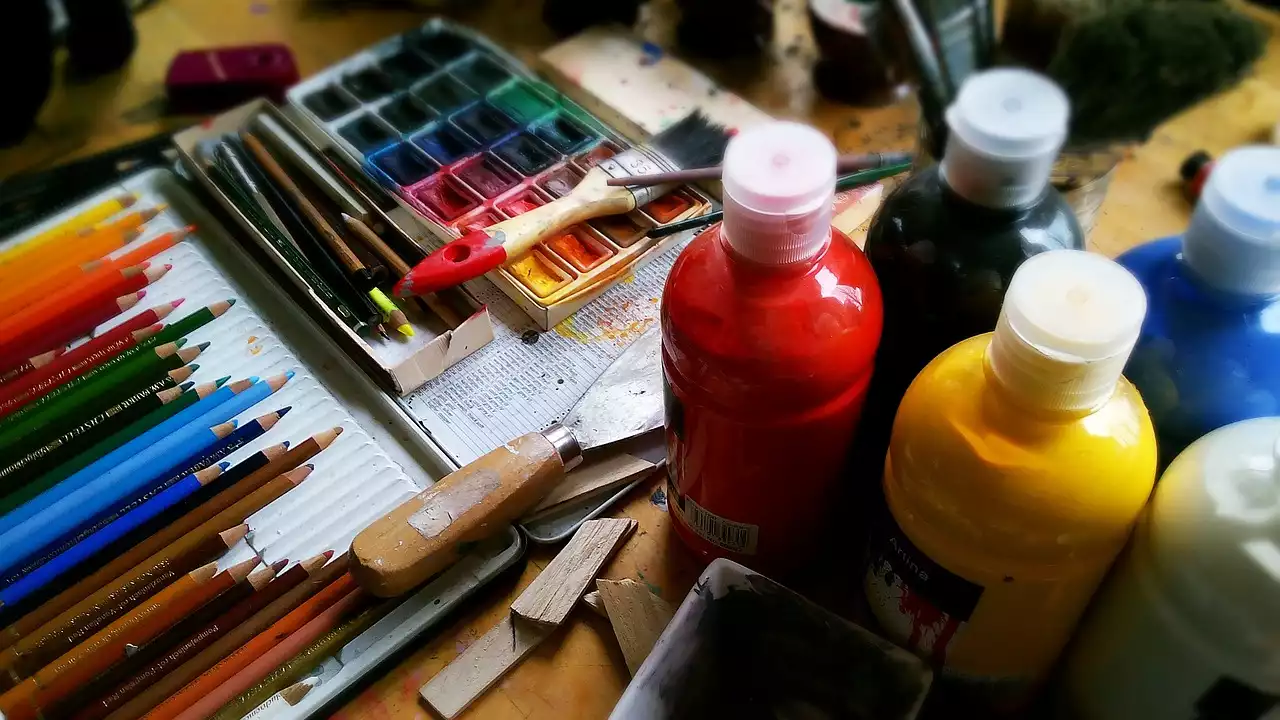Oil painting is a beautiful, timeless art form that anyone can enjoy and learn. Painting with oil isn't as intimidating as it might seem at first glance. You can begin learning with oil paints relatively easily and at a low cost. There are several different oil paint mediums that you can use to create an oil painting from start to finish. If you’re interested in learning how to paint with oils or would like to hone your skills further, this guide will give you all the information you need to get started today! You see, there are many different things you should know about oil painting before getting started. What is it exactly? Well, for starters, oil painting is a type of visual art in which artists use oil as the primary medium.
What is Oil Paint?
Oil paint is a type of paint that consists of pigment, oil, and a solvent (usually turpentine or mineral spirits). Pigment refers to the color in the paint, and is often (but not always) bound with a binder to make it stick to a surface. Oil is the medium used to transport the pigment to the painting surface (such as canvas, wood, or paper). Different types of paint are used for different purposes. There are many different types of oil paint you can use for a variety of different art projects. For example, if you're thinking about making a painting with oil paints, you'll need to know about the various types of oil paints available. There are many different types of oil paint available, including natural oil paint, alkyd oil paint, and acrylic paint.
What is an Oil Paint Medium?
An oil paint medium is a combination of two or more paints that you can use to create a new, unique paint. These paints can be combined in a variety of ways to create different effects. Oil paint mediums are great for creating a range of different effects, from something as simple as extending the drying time of your oil paints, to creating your unique artwork through different painting techniques. Oil paint mediums aren’t just limited to oil paint, though! You can also use acrylic paints and watercolors as your medium to create unique textures and effects. If you’re interested in creating an oil painting, but want a medium that’s a little lighter and easier to work with, acrylic paint is a great choice.
Oils for Acrylic Painting
Many different oil paints are suitable for use in acrylic painting, including linseed oil and walnut oil, among others. Paint manufacturers often blend different oils to create paints with the desired properties. If you’re using these types of oils, you’ll need to keep in mind that they require more time to dry than pure acrylic paints. If you’re looking to use oils in a painting that uses acrylic paint as its base, you’ll have to use a different technique than you would if you were painting with oil paints. Acrylic paintings don’t require a varnish to protect the artwork because the acrylic paint itself is water-resistant. However, if you use oil paint as part of your acrylic painting, you’ll need to apply a varnish to protect your work.
Oil Paints for Watercolor Painting
Oil paints are often used as the base for a watercolor painting. Using oil paints as your base for a watercolor painting gives the painting a longer lifespan, and makes it less prone to fading over time. If you’re using oil paints as the base for your watercolor painting, you’ll want to use medium-grade oil paint (not high-grade oil paint as these are too thick for watercolors). When painting with watercolors, you’ll want to apply your paints in layers. Your first layer should consist of a transparent watercolor paint with a bit of gum Arabic mixed in to extend the drying time. As you build up each layer, you’ll want to let the paint on each layer dry completely before applying the next layer.
Liming and Staining Oils for Oil Painting
Liming and staining oils are often used to create a wide variety of effects during oil painting. You can use liming oils to make your painting look more vibrant and colorful while staining oils can be used to create a more muted and natural effect. If you’re interested in using liming or staining oils in your oil painting, you’ll first want to make sure the canvas is primed with a suitable gesso. Gesso is a special type of paint that is designed to prepare a canvas for oil painting. Using a gesso primer on your canvas will ensure that your painting doesn’t bubble or crack.
Resin Oils for Oil Painting
Resin oil paints are a great choice if you’re looking to create a gradient or prism-like effect in your painting. If you’re painting a sunset, for example, you can use resin oil paint to create a gradient that transitions from orange to purple. If you want to create a gradient or prism-like effect in your painting, you’ll want to apply resin oil paints in a very specific way. First, you’ll want to apply a layer of clear paint before painting your gradient or prism. Next, add your resin oil paint to the top of the clear paint (not the canvas). Finally, use a very fine brush to pull the resin oil paint down toward the bottom of the canvas, creating the desired effect.
Summing Up
Oil painting is a beautiful, timeless art form that anyone can enjoy and learn. Painting with oil isn't as intimidating as it might seem at first glance. You can begin learning with oil paints relatively easily and at a low cost. There are several different oil paint mediums that you can use to create an oil painting from start to finish. Whether you're interested in learning how to paint with oils or would like to hone your skills further, this guide will give you all the information you need to get started! You see, there are many different things you should know about oil painting before getting started. What is it exactly? Well, for starters, oil painting is a type of visual art in which artists use oil as the primary medium.


 Exploring the Top-Selling Pokémon Merchandise of All Time
Exploring the Top-Selling Pokémon Merchandise of All Time Unveiling the Pokémon Supplier
Unveiling the Pokémon Supplier
 Wildlife Monitoring With the Use of Drones
Wildlife Monitoring With the Use of Drones Using Acrylic Paints in your Art
Using Acrylic Paints in your Art Try Watercolors as a Start in Painting
Try Watercolors as a Start in Painting Tempera Paint is a Little More Advanced
Tempera Paint is a Little More Advanced An Introduction to Painting Mediums
An Introduction to Painting Mediums